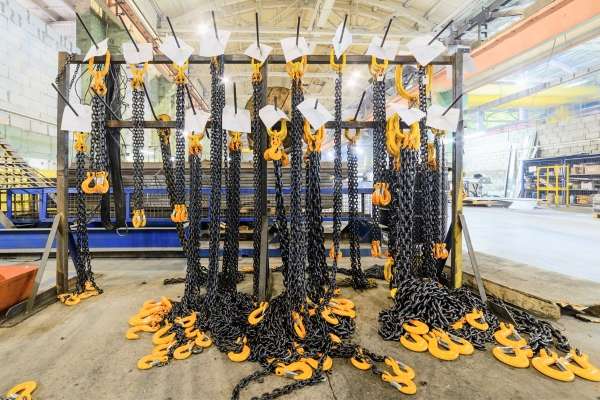100 %

Oct 5,2023
When lifting heavy loads, you need reliable equipment that ensures both safety and efficiency. Lifting chains and round slings are commonly used options in the lifting industry. Each has unique features and benefits, but which is better suited for your specific lifting requirements? Let's delve deeper into the characteristics of lifting chains and round slings to help you make an informed decision.
Chain slings are crafted from interlinked metal chains, typically constructed from high-strength steel alloys. These chains form a robust and durable lifting configuration, designed to withstand heavy loads and resist abrasion, making them suitable for rigorous industrial environments.
Round slings, on the other hand, are composed of a continuous loop of high-strength synthetic material, such as polyester, nylon, or polypropylene. The material is woven to create a flexible yet incredibly strong lifting medium. This construction provides round slings with a distinct advantage in terms of weight and flexibility.
Due to their metal composition, chain slings tend to have a higher weight-to-load ratio than round slings. This means chain slings can handle exceptionally heavy loads without compromising structural integrity.
Round slings offer a favorable weight-to-load ratio, providing a lighter alternative to chain slings for similar load capacities. This attribute makes them an excellent choice for applications where weight restrictions or portability are critical factors.
While chain slings are robust and durable, they exhibit limited flexibility. Their rigid structure makes them less adaptable to irregularly shaped or fragile loads. However, they excel in situations where a straight-line lift is required.
Round slings are highly flexible, conforming to the shape of the load they are supporting. This adaptability makes them ideal for lifting objects with irregular or delicate surfaces, as they distribute pressure evenly, minimizing the risk of damage.
The sturdy construction of chain slings grants them a high level of resistance to cutting, abrasion, and exposure to harsh environments. They are also less susceptible to damage from sharp edges or abrasive surfaces, ensuring a longer service life.
Round slings are designed with safety in mind. Their soft, synthetic material prevents damage to delicate surfaces and reduces the risk of operator injury. However, they are more susceptible to abrasion and cutting, necessitating careful inspection and maintenance.
Chain slings typically have a higher initial cost due to the expense of manufacturing and the material used. However, their durability and longevity often result in a lower total cost of ownership over time.
Round slings are generally more cost-effective upfront, primarily due to the lower manufacturing costs associated with synthetic materials. However, they may need to be replaced more frequently, especially in demanding environments.
In summary, chain and round slings represent two distinct approaches to material handling and lifting operations. The choice between them should be guided by factors such as load capacity, flexibility requirements, cost considerations, and the specific demands of the application. Understanding the structural disparities between these lifting solutions is crucial in making an informed decision that ensures safety, efficiency, and precision in lifting operations.